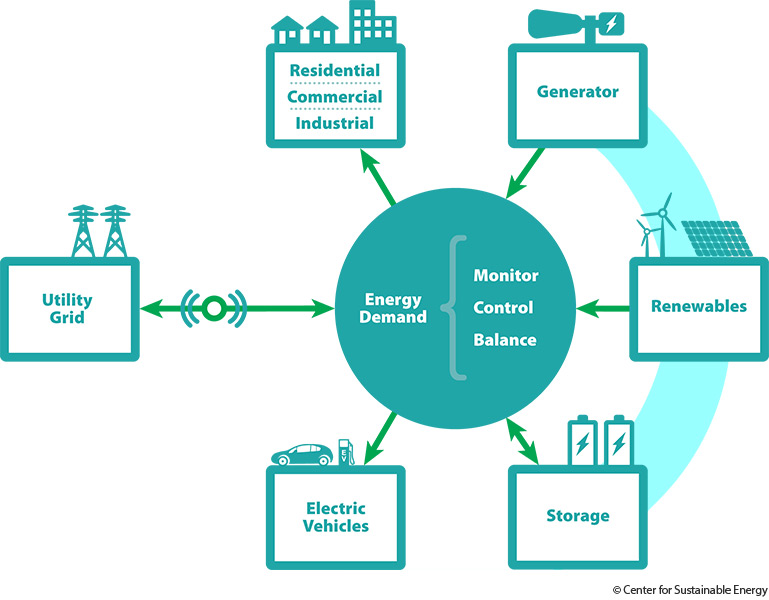The industry is trying to find ways to integrate microgrids into the grid of the future but getting the commercial model right has proven difficult.
By Janis Kreilis
New York’s Governor, Andrew Cuomo, announced last week that Albany, the state’s capital, will be getting a 19-MW microgrid for a 90-acre government office complex. The microgrid, powered by two 8-MW dual-fuel turbines, primarily run on natural gas but able to burn oil as well, will supply up to 90% of the power needs and all of the heating and cooling for the building.
New York is striving to transform its energy sector through the state’s Reinventing the Energy Vision initiative, and microgrids and distributed energy resources are set to play an important role in that transition. In March, the New York State Energy Research and Development Authority (NYSERDA) announced it would provide $11 million in funding for microgrids as part of the NY Prize competition. About $2.5 million of the Albany project costs will be covered by NYSERDA as well.
Under the oversight of the New York Power Authority (NYPA), the project developers will install the turbines in a decommissioned waste-recovery steam plant. All in all, the microgrid will help New York save almost $3 million in energy costs every year.
Traditionally, microgrids appeared on larger corporate or academic campuses for reliability purposes. A military base, say, would install a backup power plant, connect its campus in one grid, and set up an additional switch connecting the microgrid to the utility grid. If the larger grid went down, the microgrid would then “island” by disconnecting from the grid and generating electricity on its own.
With the advent of distributed energy resources such as solar, wind and battery storage technology, the complexity of microgrids – as well as the services they can provide – is set only to grow in the future.

Source: Center for Sustainable Energy
However, utilities have found it difficult to devise business models that would allow deploying microgrids on a wider scale instead of a case-by-case basis.
In January, the Smart Electric Power Alliance (SEPA) and the Electric Power Research Institute (EPRI) published a paper outlining three potential business models for microgrids based on a project developed by Xcel Energy in partnership with Panasonic and Younicos in Colorado.
SEPA and EPRI say that microgrids “improve reliability, lower costs, and diversify energy sources.” Combined with the islanding capability and the fact that they actually serve as distributed energy resource aggregators, microgrids create more value than the traditional approach. However, the current utility financing model does not help fit in microgrids: regulators often are unsure whether the costs should be covered by the all the customers or just those who are interconnected.
To date, three business models have been tried in setting up microgrids. The oldest “third-party” model was typically used in the old days to protect a campus from a grid outage during an emergency. When the grid prices peaked, the backup generators could sell some power to the wholesale markets.
The next step for microgrids was a model in which the utility owned and controlled the microgrid. The end-users would pay according to a regulated tariff with an added compensation for the microgrid service.
The newest iteration, piloted by Xcel and its partners, does not have a strict ownership and operating structure. One party could finance the microgrid, while another party operates it. In this model, the microgrid could excel by providing all the different services it includes, ranging from reliability to ancillary services to peak-shaving and more.
In Xcel’s project, Panasonic owns and operates solar panels while Younicos does the same with energy storage. The utility hopes to determine the actual costs and benefits through this and several other pilots.
As the costs of solar and storage technology decline, microgrids will enjoy lower payback periods and higher overall returns. The conversation about how to integrate them into the energy grid of the future and compensate them adequately for the unique services they provide must continue.

